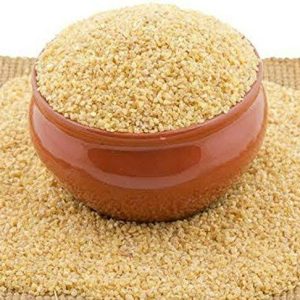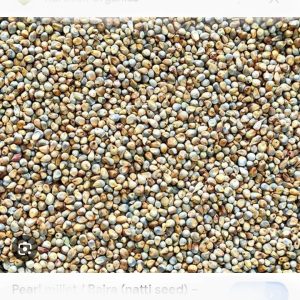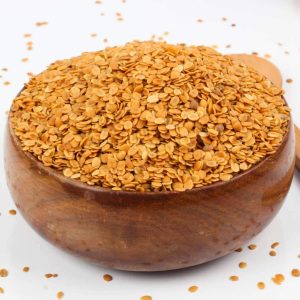Flour County Maida
₹10.50 – ₹56.70
- Baked Goods: Maida is commonly used in baking cakes, cookies, pastries, and biscuits due to its fine texture and gluten content.
“Maida” is a term used in Indian cooking to refer to a type of refined wheat flour. Here’s an overview:
1. Production: Maida is made from the endosperm of wheat grains, where the outer bran and germ layers are removed through a milling process. This results in a fine-textured flour that is white in color. The bran and germ, which contain most of the fiber, vitamins, and minerals, are removed during the refining process, leaving behind primarily starch.
2. Texture and Properties: Maida has a fine, powdery texture and is commonly used in Indian cuisine to make various types of bread, pastries, and snacks. It has a high gluten content, which gives baked goods a light and fluffy texture. Due to its refined nature, maida is often preferred for recipes that require a smooth texture, such as cakes, cookies, and pastries.
3. Culinary Uses: Maida is a versatile ingredient used in a wide range of Indian dishes, including:
- Roti and Paratha: Maida is often used along with whole wheat flour to make soft and flaky Indian bread like naan, kulcha, and paratha.
- Sweets and Desserts: Maida is used to make a variety of Indian sweets and desserts, such as gulab jamun, jalebi, and halwa.
- Snacks: Maida is used to prepare deep-fried snacks like samosas, pakoras, and bhaturas.
- Baked Goods: Maida is commonly used in baking cakes, cookies, pastries, and biscuits due to its fine texture and gluten content.
4. Nutritional Value: Maida is primarily composed of carbohydrates and lacks significant amounts of fiber, vitamins, and minerals compared to whole wheat flour. As a refined flour, it is lower in nutrients and may have a higher glycemic index, leading to a quicker spike in blood sugar levels compared to whole grain flours.
5. Health Considerations: While maida is widely used in Indian cooking and baking, it is important to consume it in moderation as part of a balanced diet. Relying too heavily on refined flours may contribute to health issues such as obesity, diabetes, and heart disease. Whole grain flours, such as whole wheat flour or multigrain flour, are generally considered healthier alternatives due to their higher fiber and nutrient content.
| WEIGHT | 10GM, 50GM, 100GM, 200GM, 500GM, 1KG |
|---|










Reviews
There are no reviews yet.